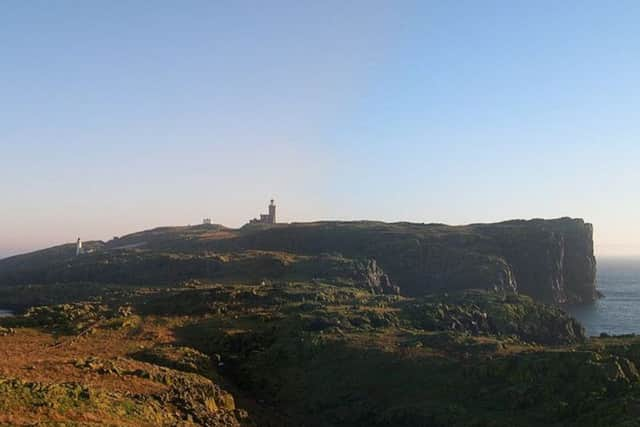The abandoned Scottish island where Picts went to heal
and live on Freeview channel 276
But more than 1,000 years ago, the Isle of May in the mouth of the Firth of Forth was a place bustling with human life - and served as a place of sanctity and care for those close to death.
Breakthrough research published earlier this year identified the island as a centre for healing during the Pictish era, when people with serious illnesses ventured to the outcrop on their last journey to seek refuge with the island’s monks.


Advertisement
Hide AdAdvertisement
Hide AdThe extraordinary findings were made using skeletons excavated by archaeologist Peter Yeoman 20 years ago with the cadavers examined once again in recent times by Dr Marlo Willows as part of her PhD studies at Edinburgh University.
Mr Yeoman, who will share the findings from the island a lecture in Edinburgh next week, said: “It is important to remember that during the medieval period, the Isle of May wasn’t a remote place, it was a busy place.
“The Forth Estuary was really how people got around. Now you look out and you might see the odd vessel heading into Leith but 1,000 years ago there would be lots of little craft from all over Europe in the water.
“The Isle of May was in a really good position. It was very well connected and quite a prestigious location.
Advertisement
Hide AdAdvertisement
Hide Ad“That was reflected later on when King David founded a monastery there in 1140. You are talking about 1,000 years of sanctity.
“Now we reckon that the island had this health function which is why so many of these people were heading out there for their last journey.”
The island long has an association with St Etheran who is said to have died on the island during his time spreading Christianity to the Picts of Fife.
Early investigations near the ruined monastery on May unearthed dozens of graves ranging from the year 500 AD to around 1500 AD.
Advertisement
Hide AdAdvertisement
Hide AdOnly around 10 per cent of the bodies buried on isle of May have been excavated with Dr Willows able to apply the latest archaeological and forensic technique to the bones removed from the ground.
Around 95 per cent of these individuals had at least one, or sometimes three, late-stage illnesses, Mr Yeoman said.
They included a teenage boy with congenital syphilis, whose leg bones had withered away with the disease.
Mr Yeoman said: “His legs had withered and he wouldn’t have been able to walk. The fact that he got to the age of 14 is quite remarkable. He would have had to have been lifted on and off a boat to reach the island.
Advertisement
Hide AdAdvertisement
Hide Ad“Maybe some people were going to get better or maybe some had gone to die near the shrine of a saint in the belief that it would speed up entry to heaven.”
Dr Willows was able to determine from testing that most people ventured to the island from the surrounding area although one man buried on May is known to have come originally from the Highlands.
This was established through the geographical imprint that drinking water leaves in the bones during the early years of life.
Mr Yeoman said: “This project marked a very major discovery in UK terms.
Advertisement
Hide AdAdvertisement
Hide Ad“From a personal point of view, my whole driver for being an archaeologist is getting to know how people lived.
“It’s not just about churches and monasteries. It’s is very much about knowing people, knowing their lives and also in this case their ill health and death.”
-Mr Yeoman will deliver his lecture Sick Picts from the May Island Monastery: Disease and Healthcare in Early Medieval Scotland at Lauriston Castle on Wednesday October 3.
